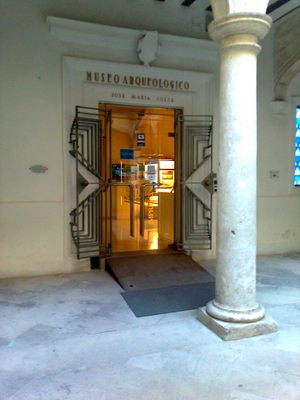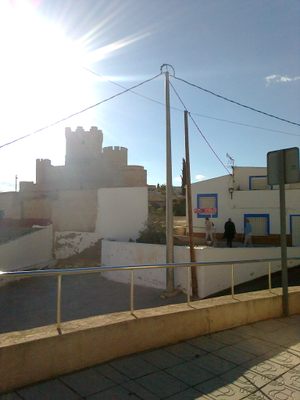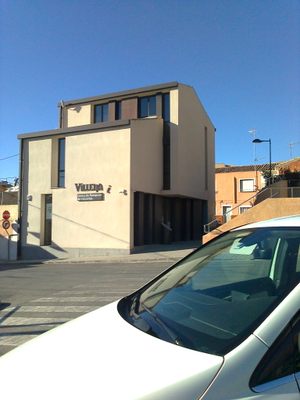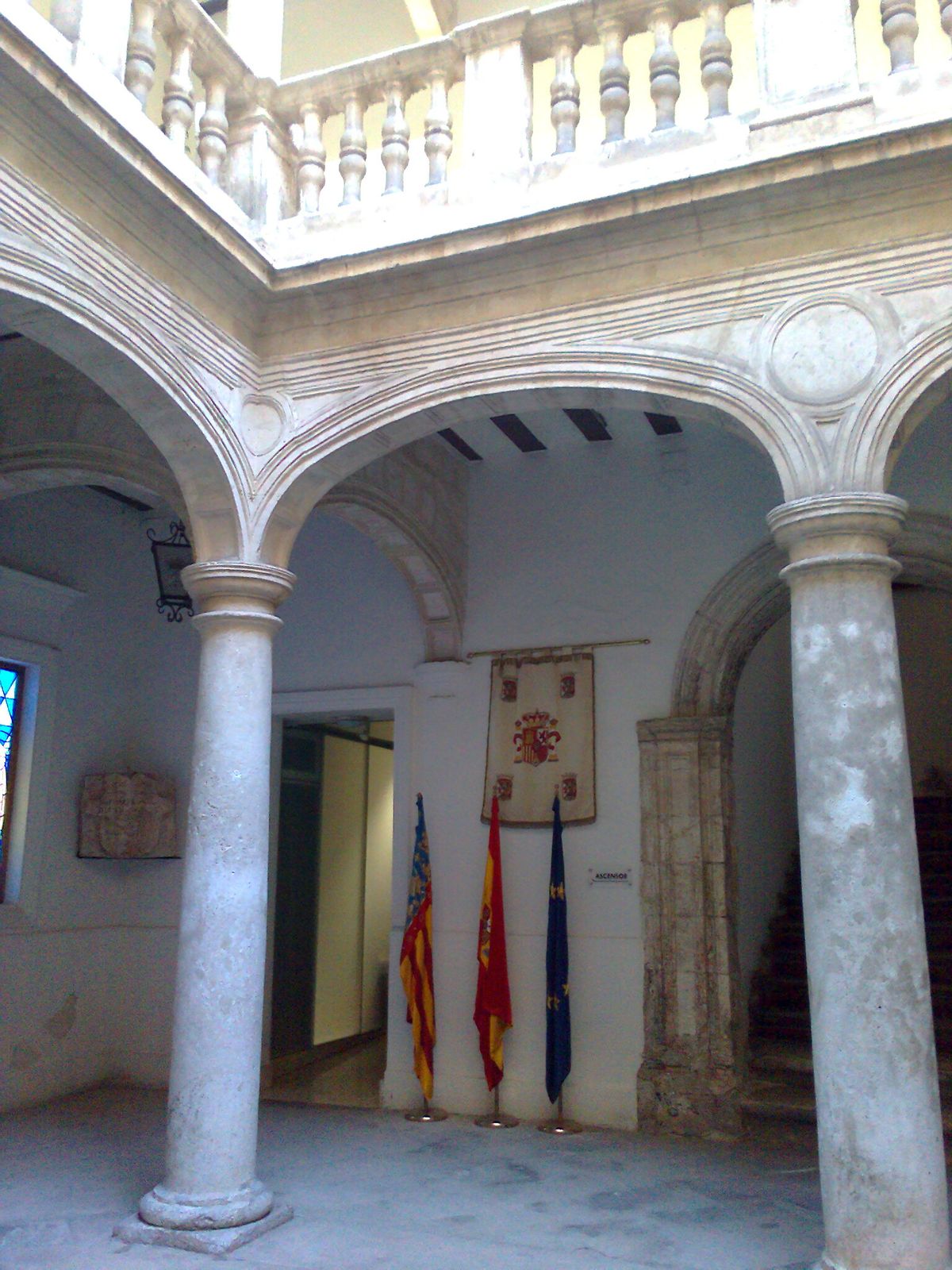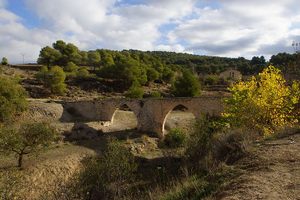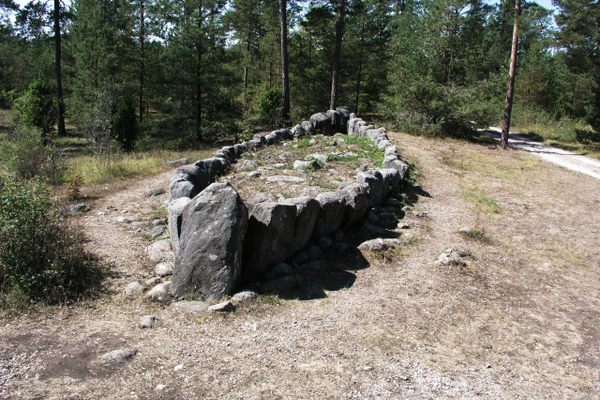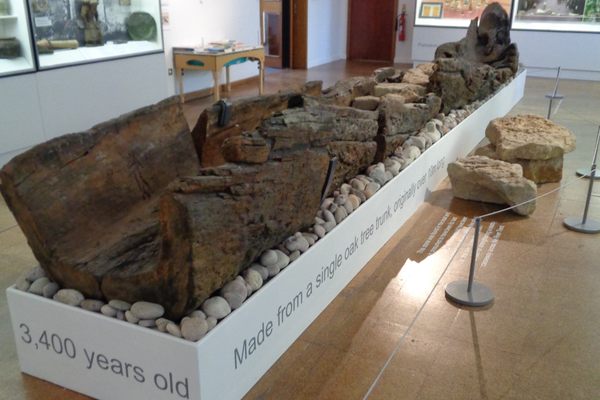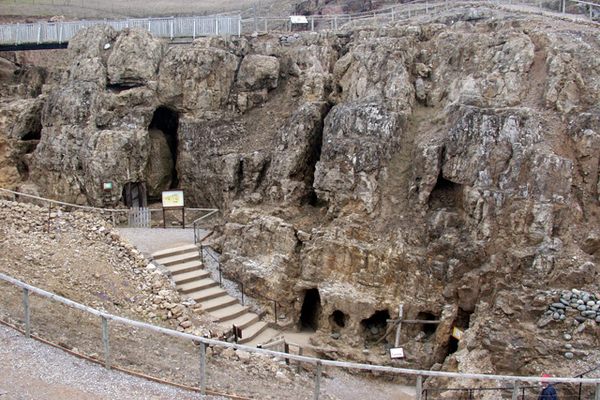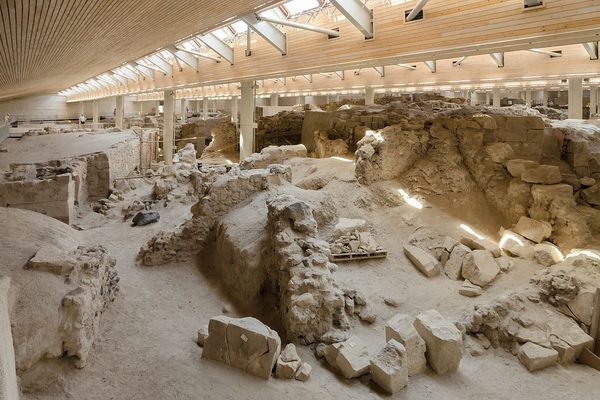About
Villena is a medium-sized city in the province of Alicante, and anyone driving past on the Madrid-Alicante autovía cannot help but notice the 12th-century castle towering majestically over the town. Those who divert to visit it will be offered the chance to also see a much less obvious attraction: the Treasure of Villena, a Bronze Age hoard containing some items that local tradition holds were made by God.
The Treasure of Villena is the largest Bronze Age treasure hoard ever found on the Iberian Peninsula, and the second-largest ever found in Europe (the largest being Royal Graves hoard found in Mycenae, Greece). It consists of 59 items of various precious materials, such as gold, silver, iron, and amber. The entire hoard weighs almost 10 kg. The gold objects—which comprise about 90% of the collection—are made of 23.5 carat gold and include eleven bowls, three bottles, and 28 bracelets.
This is considered to be one of the two most important discoveries of prehistoric gold objects in Europe, with the other being the aforementioned Royal Graves collection. The iron pieces, meanwhile, are the oldest such items that have been found in the Iberian Peninsula. It has been estimated by archaeologists that the contents of the hoard date to around 1000 BCE.
The treasure was discovered by archaeologist José Maria Soler in December 1963, in a dry river bed called the “Rambla del Panadero” about 7 miles from Villena. Somewhat curiously, the entire collections was contained inside an open–mouthed oval vessel in a hollow just two inches below the surface. There had also been a smaller hoard (called the "Little Treasure of Cabezo Redondo," and consisting of 35 pieces with a total weight of 150g) found in 1959, at a site about five miles from where the larger hoard would later be discovered. Two sets of copies of the whole treasure have been made to be shown in exhibitions all around the world.
Since its discovery, the Treasure of Villena has been the main attraction of the city’s Museum of Archaeology, which is housed on the ground floor of the (rather attractive) town hall building. The hoard is displayed in an armoured showcase at the museum. Villena’s excellent castle was built by the Moors in the 12th century and greatly extended in the 15th century, only to eventually be badly damaged (internally) by the French during the Napoleonic Wars.
Related Tags
Know Before You Go
A joint ticket for the castle and archaeological museum is a bargain at only 4 Euros (2016 price). If you are visiting both it is best to park at the castle.
Villena is pronounced the same as "Vienna" by some local Valencians but "Bienna" in Spanish.
Published
November 17, 2016

